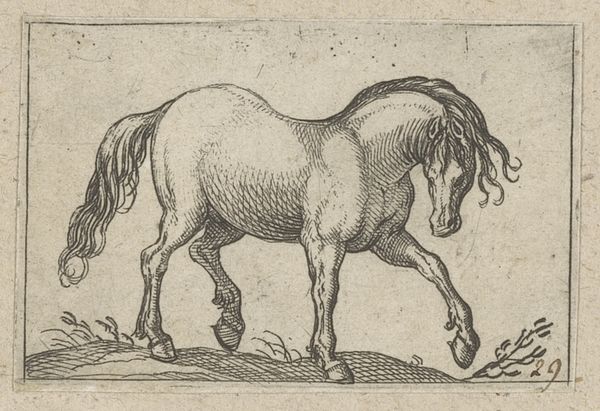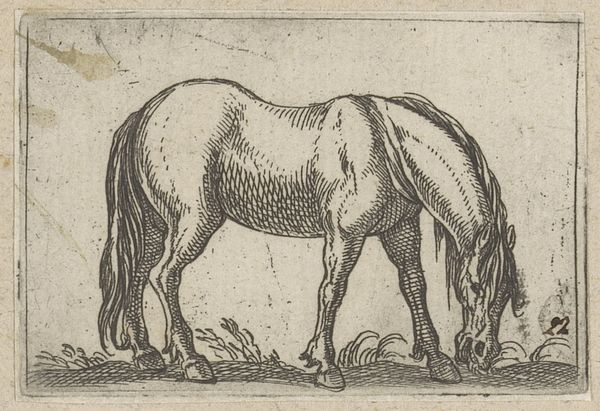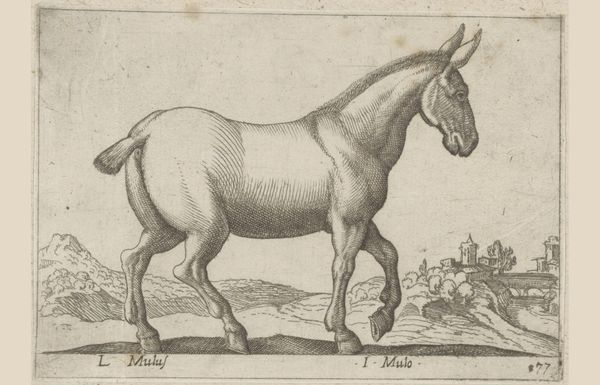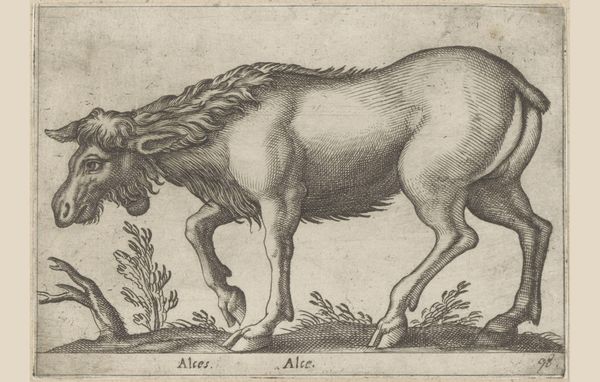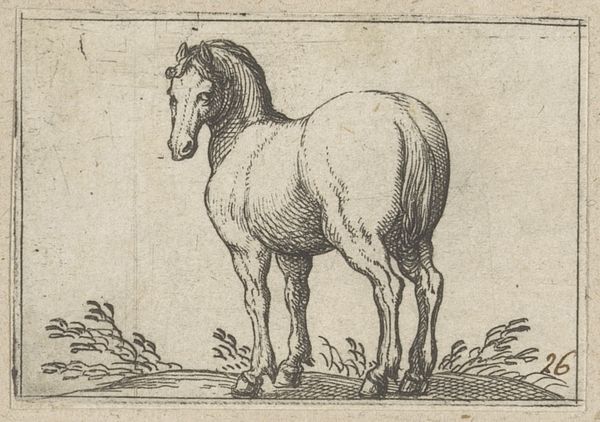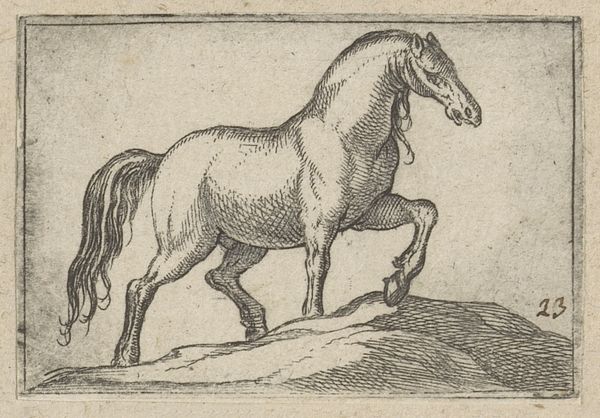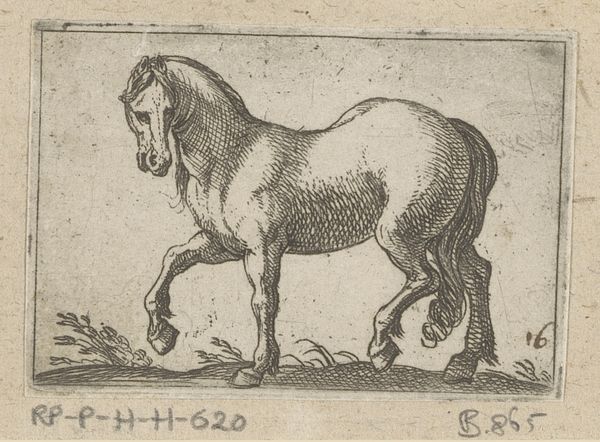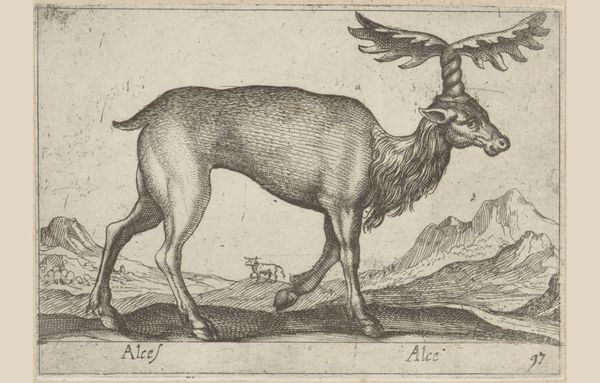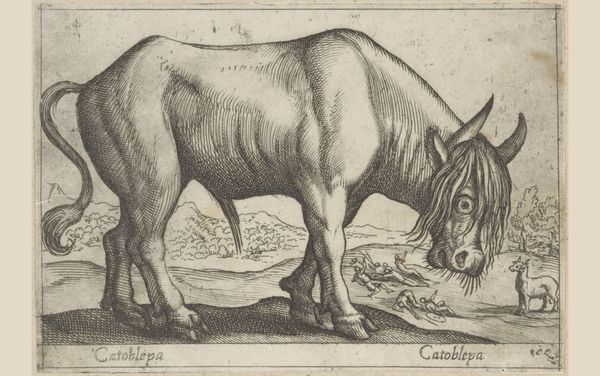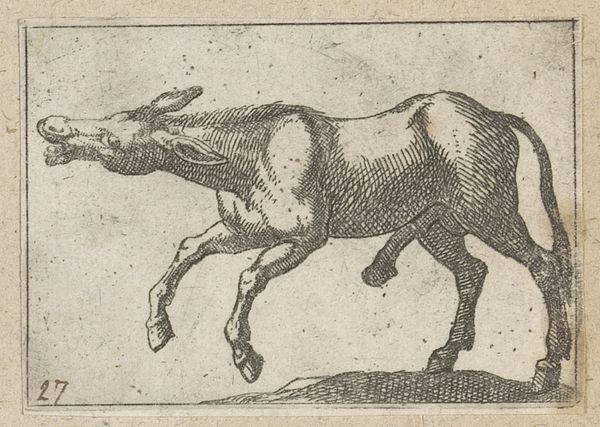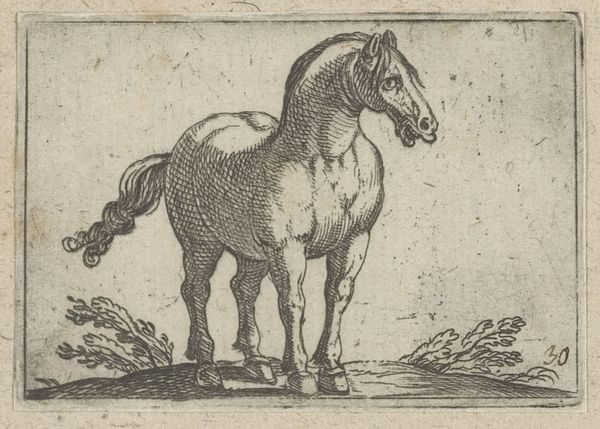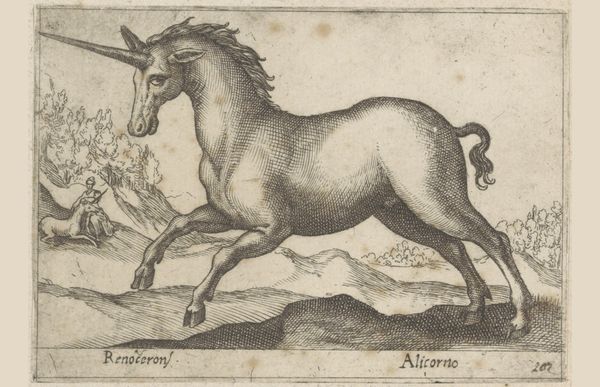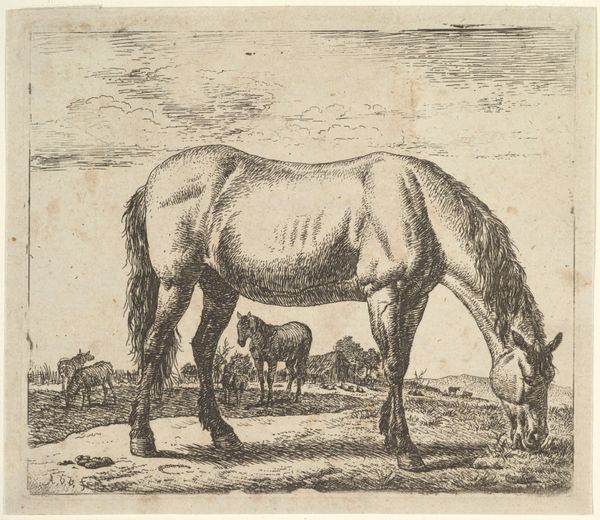
print, engraving
#
baroque
#
animal
# print
#
old engraving style
#
figuration
#
line
#
engraving
#
realism
Dimensions: height 95 mm, width 137 mm
Copyright: Rijks Museum: Open Domain
This print of an ‘Ezel,’ or donkey, was made by Antonio Tempesta around the turn of the 17th century. It’s an etching, meaning that the artist would have laboriously coated a metal plate with wax, then drawn into the wax to expose the metal. The whole plate was then immersed in acid, which bit away at the exposed lines. This is how Tempesta achieved the effect of controlled, parallel hatching, giving the donkey’s body its rounded form. If you look closely, you can almost feel the patient, repetitive labor involved. Think of it as a proto-industrial process: the same technique could be used to make hundreds of identical images. Although Tempesta was an accomplished painter, prints like these were crucial to his livelihood. They were a means of disseminating his artistry far and wide, at a modest price. This little donkey represents the commodification of art, well before our modern era of mass production.
Comments
No comments
Be the first to comment and join the conversation on the ultimate creative platform.
